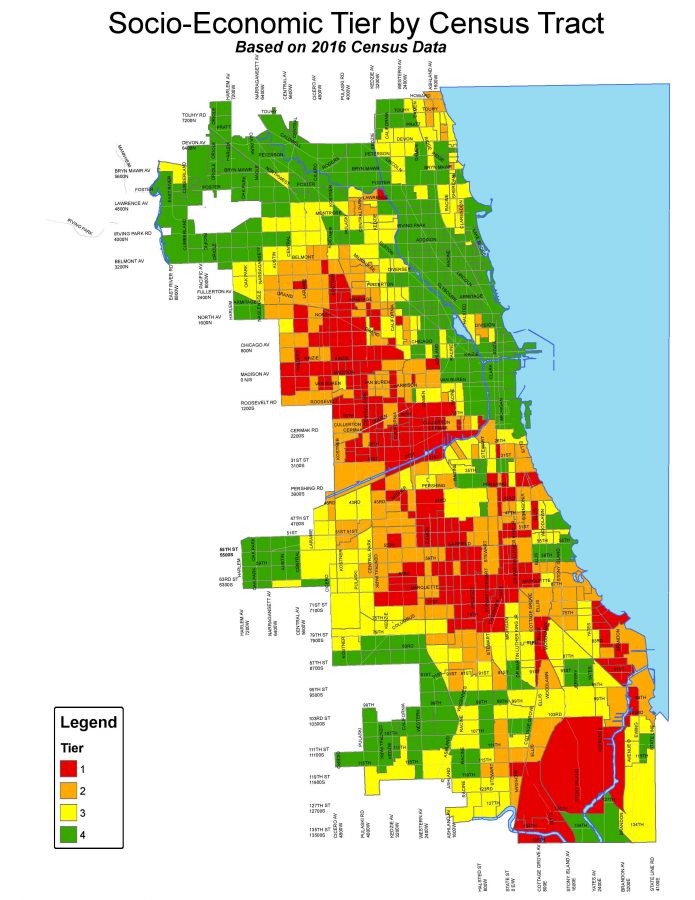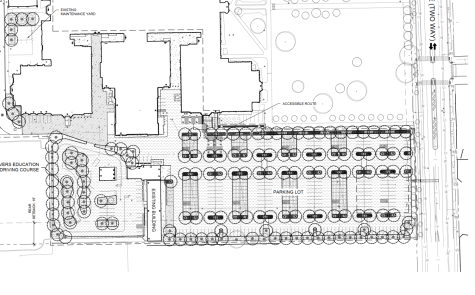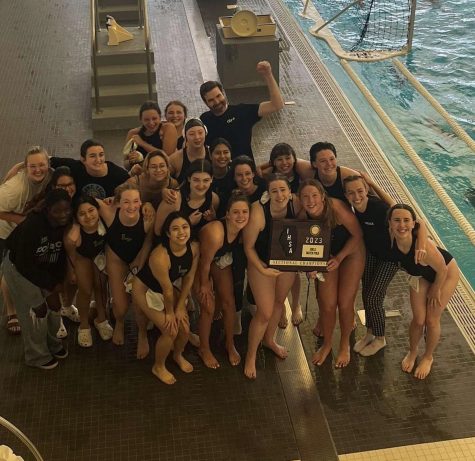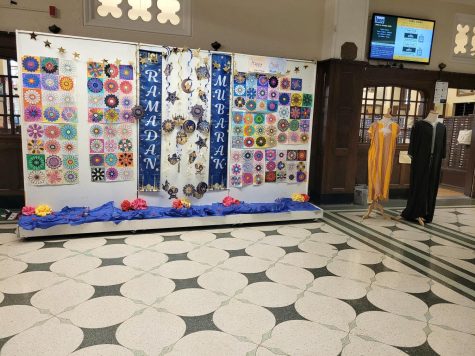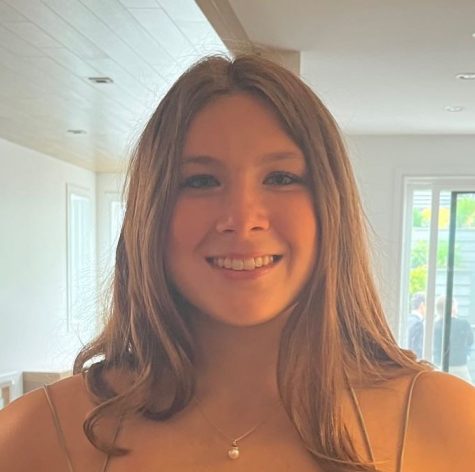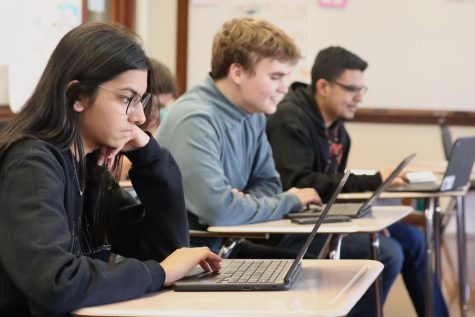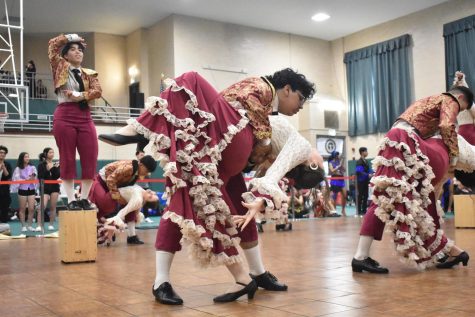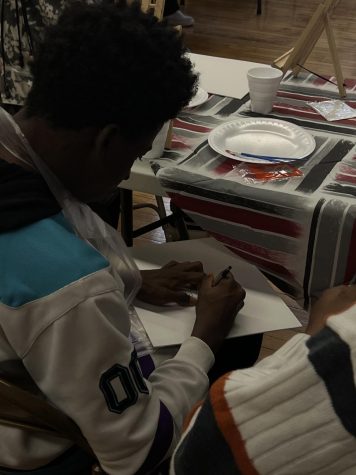With Selective Enrollment Scores on the rise, Tier System takes center stage
April 6, 2017
It’s the day most Lane students remember. Rushing to the mailbox to find one or two envelopes, each student hoping for news that they have accomplished what seems to be the impossible: admission to one of the city’s top Selective Enrollment high schools (SEHS).
“I was jumping with joy,” Luisa Carillo, Div. 986, said of when she got her letter accepting her into Lane. “I was very anxious to open it.”
“Opening the letter and seeing that I have been accepted was a very proud moment for me, as I had dreamt about going to Lane Tech for a few years now,” Maciej Koziol, a recent admit to Lane’s Class of 2021, said.
“I never saw it as an option to be here,” Angelica Zheng, Div. 963, said.
On March 3, CPS’ graduating class of 2021 were able to access their selective enrollment decisions online for the first time. Scores have continued to rise in recent years, as Lane’s cutoff scores for admission increased 16 points in Tier 4, 18 points in Tier 3 and 21 points in Tier 2, according to the CPS Office of Access and Enrollment. However, Tier 1 cutoff scores dropped two points from last year.
Students can score up to 900 points on the selective enrollment application: 300 from 7th grade core grades, 300 from NWEA scores and 300 from the selective enrollment test, according to Lane’s Admission Director, Ms. Johnson. The system has changed slightly in the past decade, as the scoring was originally out of 1000 points, with 100 being for attendance. Additionally, the system switched over to NWEA scores from ISAT scores when CPS stopped giving the latter test.
Johnson said that the CPS selective enrollment system gives wiggle room to students who may struggle in one area like testing, but still would be successful at a SEHS.
“I like that it takes into account both ability and work ethic,” Johnson said.
Yet regardless of how well a student performs, the tier system can make or break a student’s acceptance. Only 30 percent of the admitted students to SEHS are the top scorers in the process, while the other 70 percent are split evenly between tiers, according to Johnson. Tier 4, which is tier with the highest income neighborhoods, consistently has the highest score cutoffs, with many Tier 4 residents feeling the system is unfair against them.
“I don’t feel that’s a valid complaint,” Johnson said. “It does seem like people who live in Tier 4 neighborhoods are the people who are able to afford tutors, the people that send their kids to Selective Prep, always have a lot of books in their house.”
Zheng recognized that a student’s background could hold them back from future success.
“If kids are in a lower tier, they may not get the same opportunities as us,” Zheng said. “Sometimes kids are put in an environment where it’s really hard for them to succeed.”
Shoshana Goldman, Div. 754, acknowledged that the tier system is important, but at times can be taken advantage of.
“I understand the importance of having a system that gives students in less privileged schools a better opportunity to get into a selective enrollment schools,” Goldman said. “But there have been instances of people from more privileged areas finding ways to abuse the system, so I think that CPS needs to devise a more secure way of making sure it’s fair.”
Goldman is referring to allegations that came out last year that families were faking addresses in and outside of the city to be admitted into SEHS. According to DNAInfo, “A Lincolnwood family enrolled two children at Northside College Prep by a scheme in which the report alleged they created a ‘phony Chicago address’ by buying a low-value property and registering a vehicle license there.”
Additionally the 2015 CPS Inspector General report recommended stricter punishments for “tier-fraud” cases, including mandating the punishment of disenrolling students who are caught participating in tier-fraud.
“Until such a policy is adopted, there will be little to no effective deterrence against families cheating their way into selective-enrollment schools, and thereby pushing the rightful and truly deserving students out,” the report said.
Yet, some see the tier system in a whole other light. Sergio Garduno, a Payton College Prep graduate and freshman at the University of Illinois at Urbana-Champaign, said he believes that the tier system should be abolished.
“I believe that the tier system has good intentions, but is ultimately counterproductive. Instead, we should have a system based off of merit,” Garduno said. “We should simultaneously push students on lower socioeconomic tiers to perform better, so that they may qualify to enter selective enrollment schools based on their academic achievements. We must teach our students to overcome challenges, not to expect their competitors to be forcibly handicapped.”
Garduno is a member of the Illini Republicans student group, which recently gained significant media attention for putting on an “Affirmative Action Bake Sale.” The bake sale, according to Garduno, was a stand with cookies on the quad of campus. There was a sign with prices differentiating by races, lower for races that are typically benefited by Affirmative Action, and higher for races that suffer. Garduno said that ultimately everyone paid the same price for the cookies and the prices were only for “discussion,” and the students manning the stand were there to discuss why they see affirmative action an issue.
But many at the UIUC campus did not see the stunt as a discussion.
“The reaction on campus was relatively negative, and short-sighted,” Garduno said. “I noticed that many of the people complaining were complaining about the way in which the event was carried out, and not the message behind the event. They failed to notice the irony behind their opposition of the event’s façade of discrimination, but support of Affirmative Action and other race-based policies.”
Garduno said he believes the tier system and affirmative action does not serve its purpose of advancing society.
“The reason I believe so fervently in a merit-based system is because that is what most benefits society. Firstly, it leads to those who are actually qualified to attend certain academic institutions to receive the education that they deserve. It pushes students to succeed, because the only way to get into a school is to earn their spot there,” Garduno said. “Secondly, it promotes a culture in which people are valued solely by their character, accomplishments, and abilities and not by race. This allows for more people to value others based off of the content of their character, and not the color of their skin. With things like the tier system and Affirmative Action, people learn to place importance on their race and socioeconomic status, rather than on their desire to succeed and their ability to do so.”
Although many acknowledge that the tier system is flawed, they still see an importance in it. Will Downing, Div. 768, believes that there is value in the system.
“It does give children who may have not had access to all the resources that a wealthy kid would an opportunity to prove what they can do with access to these resources and gives them a chance they may have never had at a neighborhood school,” Downing said. “ I think it’s a good attempt to make schools more socioeconomically diverse, however needs to be improved to account for all families.”
Downing said he believes that grouping tiers by neighborhood may not be the best process.
“If CPS wants to continue having these selective [enrollment] high schools, then they must take the admission process with more care,” he said. “Grouping entire neighborhoods together causes some poorer families in higher tiers to be looked over and not given the opportunity they deserve, and some more affluent families to be given an unfair advantage because they live in a lower socioeconomic neighborhood.”

